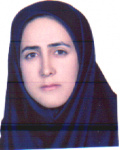| Authors | Mojtaba Arabameri, Hadis Bashiri |
|---|---|
| Journal | PHOTOCHEMISTRY AND PHOTOBIOLOGY |
| Page number | 798 |
| Volume number | 98 |
| IF | 3.521 |
| Paper Type | Full Paper |
| Published At | 2022-10-15 |
| Journal Grade | Scientific - research |
| Journal Type | Electronic |
| Journal Country | Iran, Islamic Republic Of |
| Journal Index | SCOPUS ,JCR |
Abstract
In this work, we have proposed a new approach to study the mechanism of crystal violet (CV) photodegradation on TiO2 surface using kinetic Monte Carlo simulation. The TiO2 surface was considered as a set of reactive centers, which is essential in dye photodegradation. A new variable "the effective photon concentration" (Ieff) is defined. A detailed chemical understanding of the photocatalytic reaction is provided. This approach provides a simple and effective method to find the optimal conditions of the studied system. This goal was achieved by investigating the effects of some operational parameters, including initial concentration of CV, pH, loading TiO2, light intensity and volume, on the degradation percent, and also, on the effective photon concentration. The perfect agreements between the experimental and simulated data at different conditions confirmed the proposed approach for describing the CV photodestruction. Also, the simulation results indicated that: (1) a significant fraction of the scattered UV irradiation into the reaction vessel does not lead to charge carrier generation; (2) the generation and recombination of charge carriers have crucial roles in the photodegradation. This is the first time that a method based on the reactive centers is employed to investigate the dye degradation by a photocatalyst.
